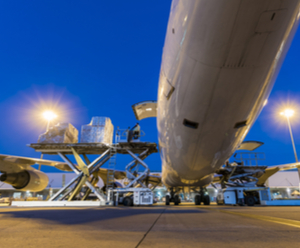
SMEs urged to remain agile, transparent with customers to keep goods moving: DHL

Reliance among SMEs on e-commerce systems and communication has intensified as Australian cities scale up lockdown restrictions to supress the Delta variant.
With this latest setback creating more uncertainty, it is worth looking back at how entrepreneurs have leaned into the Covid-19 crisis to keep their goods moving, with the most successful being those who were agile and transparent in how they kept customers informed.
As stay and work-from-home economies geared up and shoppers turned mostly online around the globe in 2020, demand for lifestyle goods in particular boomed. Surging online orders for items from wellness products to pet accessories, contributed to a 25 percent lift in outbound freight volumes handled by DHL’s Australian eCommerce division by year end.
Driving much of this volume was the meteoric rise in demand we saw for kids toys and kitchenware, with outbound freight up 6,000 percent and 1,000 percent respectively, to destinations such as Canada, New Zealand, the United States and the United Kingdom. This is a feat worth putting into context.
Keeping freight moving over the last 18 months has been an enormous challenge, with only slivers of air freight capacity available thanks to a 90 percent reduction in passenger flights and in some countries, total closure of last mile and uplift postal services. From a costs perspective, freight rates per kilo in some cases rose nearly 900 percent and transit times were severely impacted due to ‘last mile’ delivery hold ups.
It was through managing expectations on what the new normal looks like, particularly around shipping, transit times and increased costs, and re-evaluating their supply chain strategies that paved the path back to some normality.
For SMEs, this involved turning their existing freight and logistics approach on its head, with many for the first time charging customers freight costs, a substantial change to their business models that had once benefited from copious freight room and few impediments.
Most SMEs provided tiered cost options to match customer needs and budget. While the mega platforms may have been able to absorb the costs of ‘free shipping’, most SMEs had no choice but to pass these costs on to customers, only to discover that this was not the competition impediment that many had feared. Each arrived at a similar plan; to re-evaluate key markets, incorporate freight charges into commercial terms and provide regular and transparent updates.
Just as DHL worked very hard to provide enterprise clients with constant cost and transit updates as ‘last mile’ and uplift times varied widely from country to country, SMEs did the same for their customers. They incorporated logistics communication as a key part of customer service and experience, leveraging new technologies designed to support customer communication and transit tracking.
It was a collaborative effort that has helped businesses manage which markets they elected to service and which they chose to re-open markets once costs, times and policies normalized. In so doing, they built models that can cope and respond to structural changes such as new taxes, country policies and geo-political events — all part and parcel of modern business.
While there were some tailwinds to support this step-change, such as highly agile management styles typically applied by younger, e-savvy merchants, it was their commitment to transparent customer engagement and the ability to quickly re-evaluate and modify strategies that set them apart.
Uncertainties have persisted into 2021, and yet our freight volumes have stayed at 2020 highs, indicative of more entrepreneurs leaning into the crisis to provide goods fit for a world with coronaviruses. Athleisure remains the consistent outperformer, continuing its growth trajectory with freights up 60 percent year to date.
Despite the 27.6 percent rise in global ecommerce sales in 2020 according to eMarketer, we’re still in the early stages of economies turning fully digital, powered further and faster by new payment systems, banking products, Buy-Now-Pay-Later providers and new technologies that are enabling more trade across domestic and international borders. Yet logistics is a major pillar that needs to be a central consideration.
The Australian Chamber of Commerce and Industry (ACCI)’s fifth National Trade Survey concurs, going so far as recommending for government action that freight and logistics services be integrated into trade policy to shore up Australia’s competitiveness as an export nation.
While this may signal a new era for logistics, with B2C trades catching up to the B2B economy, 2020 taught us the value and power of agility and transparency. These are what kept freight moving and customers happy, setting many businesses up for further success.
Tips for merchants
Tips for merchants
- Be upfront and transparent about delivery costs and transit times, and provide regular updates
- Be agile in re-evaluating priority markets and product focus
- Offer cost-tiered freight options to customers
- Integrate logistics into CRM and customer engagement activity
This article was first published on Dynamic Business.
ALSO WORTH READING













 English
English